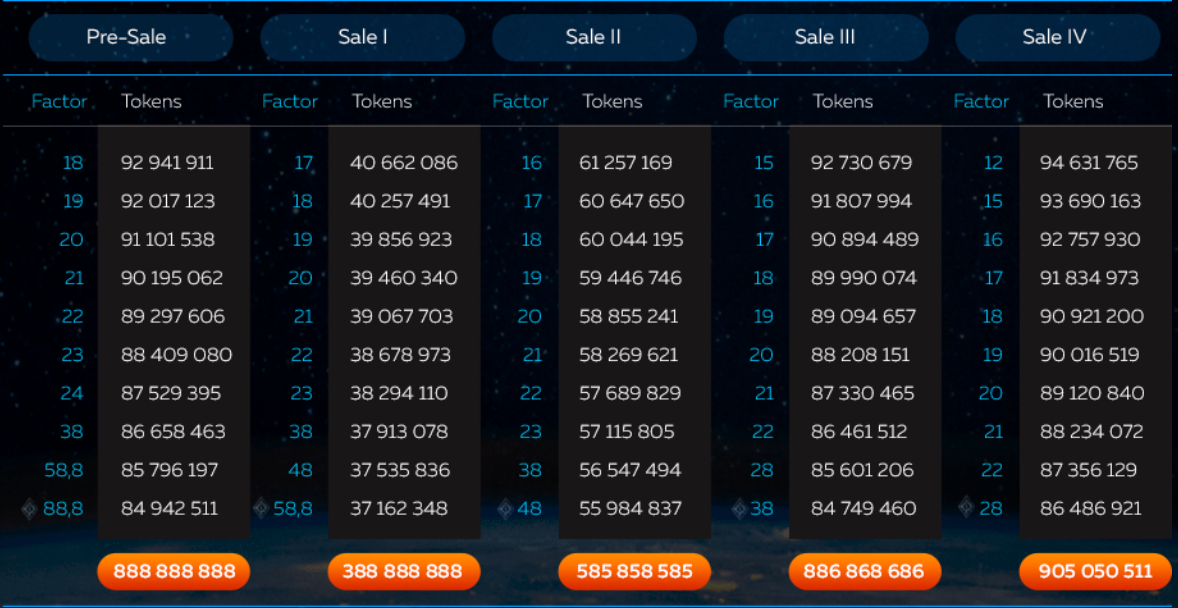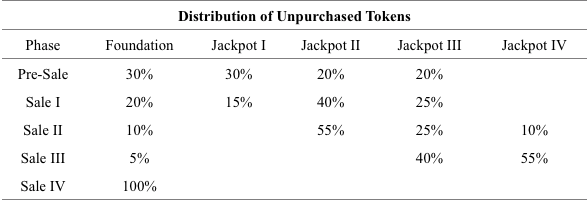How do the Jackpots in the Sp8de ICO work? A Comprehensive Explanation.
There has been an enormous demand for a thorough explanation of how the Jackpots during the Sp8de ICO will work. In this document we intend to shed light on this issue by providing the so coveted explanation as we want to be fully transparent to our investment public.
The Jackpots work as follows:
In essence, every Jackpot is an airdrop of tokens, however, with major modifications.
Every token sold during the preceding Sale rounds has a chance of winning a Jackpot during the subsequent Jackpot phases. For example, if you participated in the Pre-Sale then you have a chance to participate in all four Jackpot phases, but if you participated in Sale IV then you get to participate only in Jackpot IV.
Jackpots are large lots of SPX tokens that will be granted to a “lucky guy” – the owner of the token that will be chosen as a winner. So, any winner will get the entire lot. For example, there will be only 10 wallets (or less) who will win 28,888,888 SPX tokens during Jackpot I. The full jackpot schedule is as follows:
Jackpot I: 10 Jackpots each of 28,888,888.80 SPX. A total of 288,888,888 SPX on February 15, 2018, 9:00 AM UTC
Jackpot II: 28 Jackpots each of 13,888,888.86 SPX. A total of 388,888,888 SPX on February 23, 2018, 9:00 AM UTC
Jackpot III: 100 Jackpots each of 8,888,888.88 SPX. A total of 888,888,888 SPX on March 3, 2018, 9:00 AM UTC
Jackpot IV: 888 Jackpots each of 2,127,127.13 SPX. A total of 1,888,888,888 SPX on March 11, 2018, 9:00 AM UTC
Jackpot tokens do not participate in the subsequent jackpots, so winning a jackpot does not increase one's chances of winning another one.
An important aspect of the jackpot campaign is the presence of Jackpot Factors attached to every token. This makes the game much more interesting and allows anyone to actually influence one's odds to win the Jackpot.
These factors work in the following way:
a. The factor is the probability multiplier. Without these factors, every token would have a probability of winning one jackpot in a particular Jackpot phase; where is the total number of tokens and is a constant equal to the number of jackpots within every particular Jackpot phase. With factors, the formula changes to
where j is the factor of a token, i is the group of tokens, - the number of tokens in the group.
Every group is defined as having some factor that every token within this group holds and a number of tokens that belong to this group. For example, if you participated in the Pre-Sale by getting 1,000,000 SPX and you got a multiplier of 88.8 (the maximum), then every single token that you hold has a 4.93 times higher chance of winning one or multiple of the jackpots during Jackpot phases I until IV, as compared to someone holding the same amount of tokens but with a factor 18.
b. The total probability of you winning the jackpot during Jackpot phases I until IV is calculated as follows:
where j is a group id of tokens that you hold, – the number within each group – therefore, a simple weighted probability. Of course, these numbers are different for every sale and jackpot round depending on how many tokens remain in the pools. Following the logic of from the example in a), the chance of winning a jackpot in Jackpot I with these parameters is equal to ~2.22%.
c. The factors are decreasing within every sale round as the tokens are being bought out. They also decrease between the Sale rounds: tokens in Sale II do not hold as powerful factors as those in the Sale I.
How jackpots work in practice?
Current jackpot phase (e.g. Sale I) ends at 9:00 AM (2018-02-14) UTC.
An additional half of an hour (until 9:30 AM) is given for all the ‘late’ transactions to settle. At 12:30 new SPX tokens are generated and distributed among the investors.
A list of transactions along with the factors and wallets of participating users is generated. The ‘win’ intervals are constructed taking into account the stake in the system and the factors. Additionally, we include the following variables: ETH addresses of participants, Start, End – the tokens participating in the jackpot.
We calculate the Start, End for every user transaction. For example:
, in general:
Now, we relate the intervals in (I) to the user id’s, effectively creating a list of the form:
Thereafter this list along with other relevant information is made public.
During the day of the jackpot (in this example, 2018-02-15), at 9:00 AM UTC the seed for generating random numbers is generated in the following way:
We take the hash of the first slot with a block (not empty slot) confirmed after 9:00 AM UTC;
We wait for the first block issued on the Bitcoin blockchain after the ADA block in ‘a’ to be confirmed and take it’s hash;
We determine the number of the ETH block confirmed after the BTC block in ‘b’ and take the hash of the ETH block confirmed two blocks earlier;
We concatenate the three hashes into one string:
where H is the hash, n – the number of the last block.
We calculate the SHA-256 using the string in ‘e’ as the seed;
We take the resulting 32-byte hash and turn it into an array of 8 integers which we will later use as the actual seed for generating random numbers;
We put this seed into MT19937Generator and generate N random numbers in the range 1: MAX RANGE, where N is the number of jackpots, MAX RANGE is the weighted sum of the coins participating and their respective factors – basically the End parameter for the last participating id.
The prize distribution is made public, SPX are sent to the happy winners.
Allocation of Unpurchased Tokens
There is a possibility that some part of every token Sale will remain unpurchased. As illustrated in the table below the majority of the tokens that remain unsold will be automatically distributed among the Jackpots, increasing the number of tokens to be received by the participants in every Sale. If any tokens are allocated to the Spade Foundation they will be used for further development and promotion of the project.
For example, if 10,000,000 SPX has not been purchased during the Pre-Sale phase then 3,000,000 SPX will be allocated to the Sp8de Foundation, another 3,000,000 SPX will be attributed towards Jackpot phase I; 2,000,000 SPX for Jackpot phase II; and the last 2,000,000 SPX for Jackpot phase III. These attributions will be made in equal amounts towards every of the jackpots within each of the Jackpot phases – i.e. during Jackpot I all of the jackpots will be increased by 300,000 SPX resulting in 29,188,888.80 SPX per jackpot. The same logic applies to the rest of the Jackpots and all unsold tokens.
for full info please check the white paper https://sp8de.com/sp8de_white_paper.pdf

